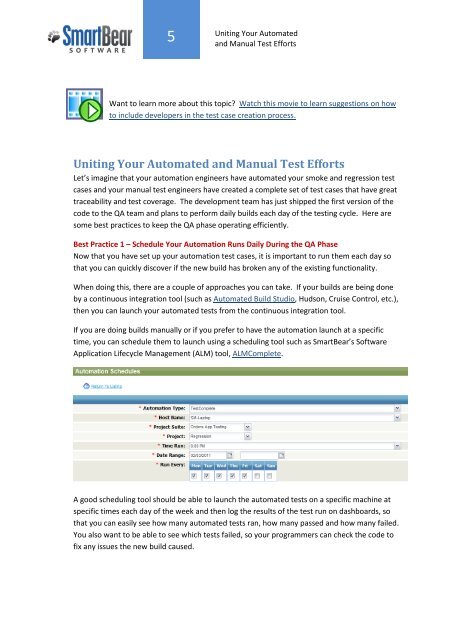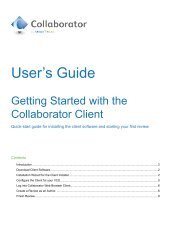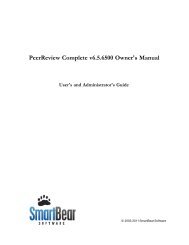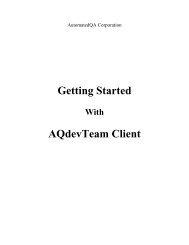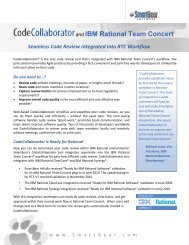Uniting Your Automated and Manual Test Efforts - SmartBear Support
Uniting Your Automated and Manual Test Efforts - SmartBear Support
Uniting Your Automated and Manual Test Efforts - SmartBear Support
You also want an ePaper? Increase the reach of your titles
YUMPU automatically turns print PDFs into web optimized ePapers that Google loves.
5<br />
<strong>Uniting</strong> <strong>Your</strong> <strong>Automated</strong><br />
<strong>and</strong> <strong>Manual</strong> <strong>Test</strong> <strong>Efforts</strong><br />
Want to learn more about this topic? Watch this movie to learn suggestions on how<br />
to include developers in the test case creation process.<br />
<strong>Uniting</strong> <strong>Your</strong> <strong>Automated</strong> <strong>and</strong> <strong>Manual</strong> <strong>Test</strong> <strong>Efforts</strong><br />
Let’s imagine that your automation engineers have automated your smoke <strong>and</strong> regression test<br />
cases <strong>and</strong> your manual test engineers have created a complete set of test cases that have great<br />
traceability <strong>and</strong> test coverage. The development team has just shipped the first version of the<br />
code to the QA team <strong>and</strong> plans to perform daily builds each day of the testing cycle. Here are<br />
some best practices to keep the QA phase operating efficiently.<br />
Best Practice 1 – Schedule <strong>Your</strong> Automation Runs Daily During the QA Phase<br />
Now that you have set up your automation test cases, it is important to run them each day so<br />
that you can quickly discover if the new build has broken any of the existing functionality.<br />
When doing this, there are a couple of approaches you can take. If your builds are being done<br />
by a continuous integration tool (such as <strong>Automated</strong> Build Studio, Hudson, Cruise Control, etc.),<br />
then you can launch your automated tests from the continuous integration tool.<br />
If you are doing builds manually or if you prefer to have the automation launch at a specific<br />
time, you can schedule them to launch using a scheduling tool such as <strong>SmartBear</strong>’s Software<br />
Application Lifecycle Management (ALM) tool, ALMComplete.<br />
A good scheduling tool should be able to launch the automated tests on a specific machine at<br />
specific times each day of the week <strong>and</strong> then log the results of the test run on dashboards, so<br />
that you can easily see how many automated tests ran, how many passed <strong>and</strong> how many failed.<br />
You also want to be able to see which tests failed, so your programmers can check the code to<br />
fix any issues the new build caused.


